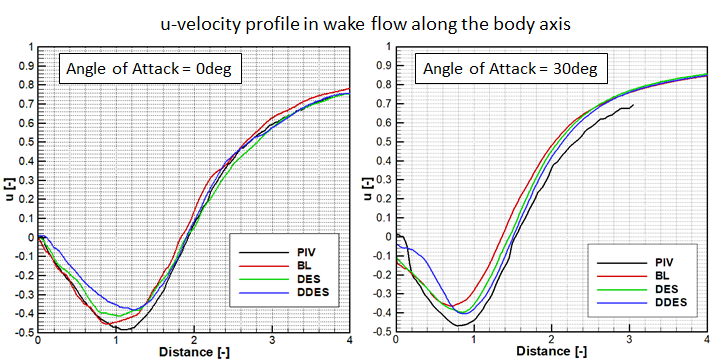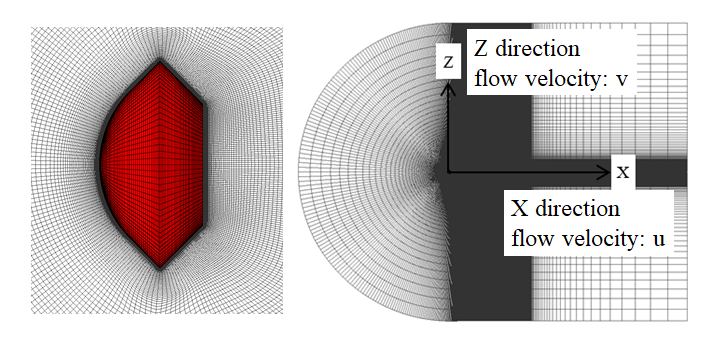Research and Development of Sample Return Capsule for future planetary exploration
JAXA Supercomputer System Annual Report April 2018-March 2019
Report Number: R18EU1600
Subject Category: Space and Astronautical Science
- Responsible Representative: Kazuhiki Miho (JAXA/ISAS Program Office)
- Contact Information: Yamada kazuhiko(yamada.kazuhiko@jaxa.jp)
- Members: Kazuhiko Yamada, Yusuke Higo, Kazuki Nohara, Tomoya Kazama, Aoi Harashima
Abstract
Hayabusa’ is the first sample return mission to an asteroid in deep space and proved its significance worldwide. The sample return mission will become one of the important missions in future planetary exploration. A sample return capsule is indispensable technology to realize it. The objectives of this activity are to take over its heritage and to enhance its technology in order to realize the flexible and attractive future sample return mission.
Reference URL
N/A
Reasons for using JSS2
Computational fluid dynamics related the sample return capsule was carried out using super computer. These results will be reflected in the design of future sample return capsules. It is generally difficult to reproduce the fluid dynamic condition in free flight of sample return capsule in ground tests. The numerical simulation is useful to understand the fluid dynamics phenomenon. However, the numerical simulation related to fluid dynamics requires the large computational resource. So, the super computer is indispensable. Its complex fluid dynamics around the sample return capsule can be understood, combining the results of both ground tests and numerical analyses using a super computer.
Achievements of the Year
In this year, computational fluid analysis focusing on wake flow of Hayabusa type sample return capsule have been conducted since last year, which is important for the parachute system design and aerodynamic stability. A computational grid (Fig.1) was created to consider the influence of spatial resolution change on wake flow of capsule. The unsteady numerical fluid analysis was performed using three turbulence mode(Baldwin-Lomax: BL, Detached-Eddy Simulation: DES, Delayed Detached-Eddy Simulation: DDES). These numerical results were compared with experimental results, which is the visualization of the wake flow in low speed wind tunnel by PIV method (Fig.2). In the future, this numerical method will be utilized for the development of the aerodynamic database and prediction for the aerodynamic stability to future sample return capsule design.

Fig.2: Comparison with three turbulence models and wind tunnel results about u-velocity profile in wake flow in case of 0 and 30 degree angle of attack
Publications
– Oral Presentations
1)Kazuki Nohara, Yusuke Maru, Kazuhiko Yamada, and Nobuyoshi Fujimatu, “Comparison with PIV Measurement and CFD Analysis on Wake Flow of Hayabusa Type Sample Return Capsule”, 50th Fluid Dynamics Conference, Miyazaki
2)Kazuki Nohara, Kazuhiko Yamada, and Nobuyoshi Fujimatu, “A study on Aerodynamic Characteristics of Hayabusa Type of Sample Return Capsule”, Proceedings of 62nd Space Sciences and Technology Conference, Fukuoka
Usage of JSS2
Computational Information
- Process Parallelization Methods: MPI
- Thread Parallelization Methods: N/A
- Number of Processes: 128 – 256
- Elapsed Time per Case: 200 Hour(s)
Resources Used
Fraction of Usage in Total Resources*1(%): 0.14
Details
Please refer to System Configuration of JSS2 for the system configuration and major specifications of JSS2.
| System Name | Amount of Core Time(core x hours) | Fraction of Usage*2(%) |
|---|---|---|
| SORA-MA | 1,233,421.72 | 0.15 |
| SORA-PP | 460.45 | 0.00 |
| SORA-LM | 0.00 | 0.00 |
| SORA-TPP | 0.00 | 0.00 |
| File System Name | Storage Assigned(GiB) | Fraction of Usage*2(%) |
|---|---|---|
| /home | 27.02 | 0.03 |
| /data | 270.21 | 0.00 |
| /ltmp | 5,533.86 | 0.47 |
| Archiver Name | Storage Used(TiB) | Fraction of Usage*2(%) |
|---|---|---|
| J-SPACE | 2.21 | 0.08 |
*1: Fraction of Usage in Total Resources: Weighted average of three resource types (Computing, File System, and Archiver).
*2: Fraction of Usage:Percentage of usage relative to each resource used in one year.
JAXA Supercomputer System Annual Report April 2018-March 2019



